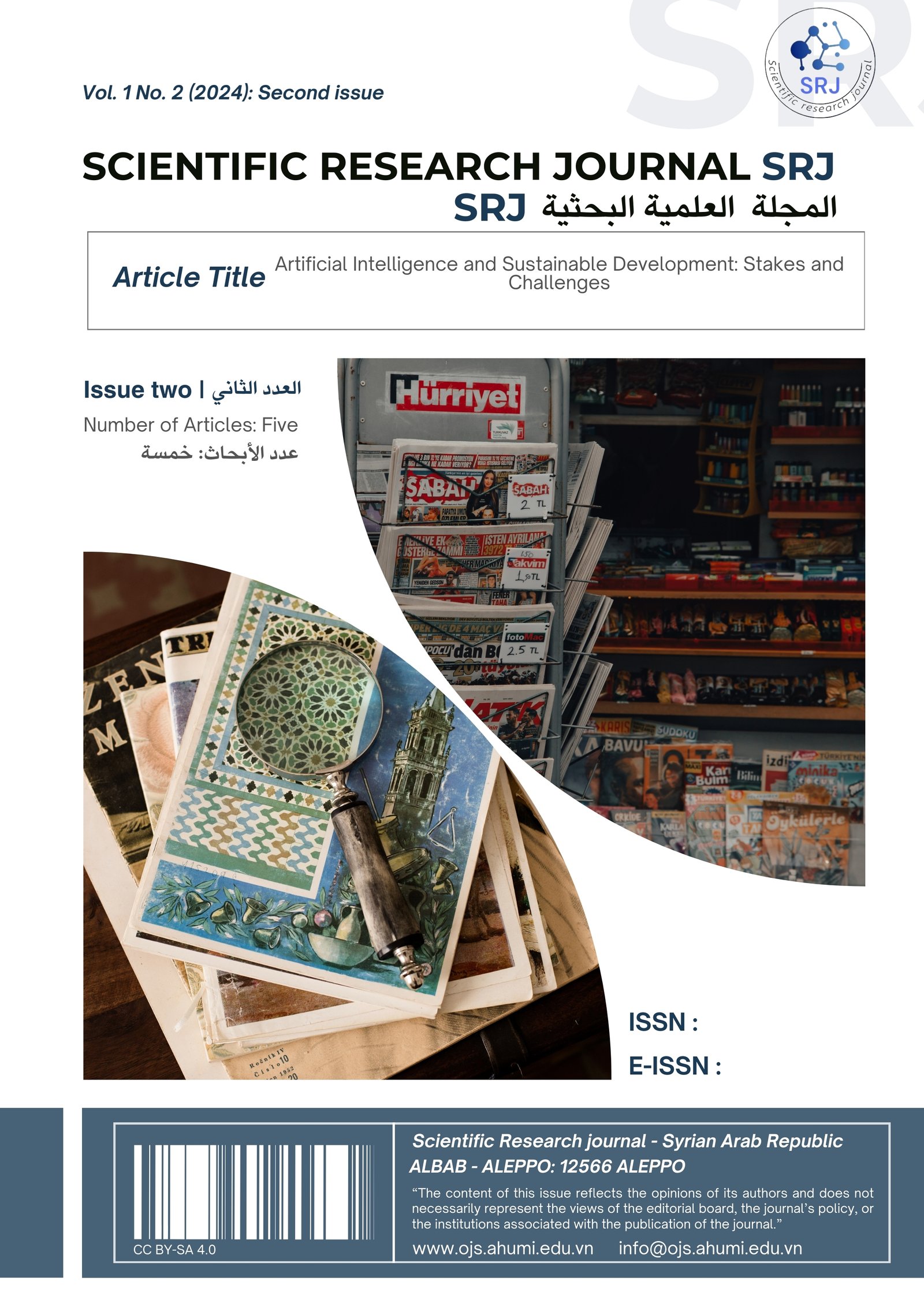Artificial intelligence and automated processing of the Arabic language: research on automated speech recognition systems.
Keywords:
Automated processing of natural languages, automated processing of the Arabic language, artificial intelligence, Arabic speech recognition systems, speech-to-text, text-to-speechAbstract
Automated processing of natural languages is one of the vital fields that has received great attention by researchers and engineers because of its great impact on advanced artificial intelligence methods, especially machine learning and deep learning supported by an artificial neural network. In front of the huge increase of applications that convert spoken to written and written to spoken, in addition to applications of automatic translation, spelling and grammar, automatic formation of texts, morphological and grammatical analyzers and other various computer applications that have become the basics of linguistic engineering.
This study entitled "automated processing of the Arabic language research in automated speech recognition systems" aims to shed light on many of the challenges faced by automated processing of natural languages and the Arabic language in particular, as automated processing of natural languages seeks to analyze texts and process them at their phonetic, morphological and grammatical levels using artificial intelligence, which increases these difficulties is the specificity of the Arabic language and its uniqueness from other languages. To be more specific, the emphasis was placed on automated speech recognition and Arabic speech in particular, as these studies enter the field of artificial intelligence, which envisages the development of the machine in general to mimic human intelligence in understanding, analyzing and processing language.
Speech-to-text is a computer language technology used for automatic recognition of human speech or recognition of sound sequences into text, although the method of converting spoken to written sounds similar to the method of converting written to spoken Text-to- Speech, however, the conversion process itself differs technologically and in practice, which makes it Dictate the algorithmic paths it takes, as it changes according to the context of automated processing, so input / analysis alternates with output/ generation in each way, the best method followed by this conversion technology was the dictation dictation method adopted by Microsoft in the person of "Word Microsoft", which allows users to dictate or spell a word aloud instead of typing it in their text files, the artificial intelligence engine and machine learning algorithms process the Spoken Word and converted into accurate text and so used in translation applications and in existing conversation applications It can easily convert the language spoken by the user into text in a different language using speech to text, and it can also help people with motor disabilities to use the grid by creating text files and filling out forms on a digital platform without having to type them.
Downloads
Downloads
Published
Issue
Section
License
Copyright (c) 2024 Scientific research journal

This work is licensed under a Creative Commons Attribution 4.0 International License.
“The content of this issue reflects the opinions of its authors and does not necessarily represent the views of the editorial board, the journal’s policy, or the institutions associated with the publication of the journal.”
— Editor-in-Chief




